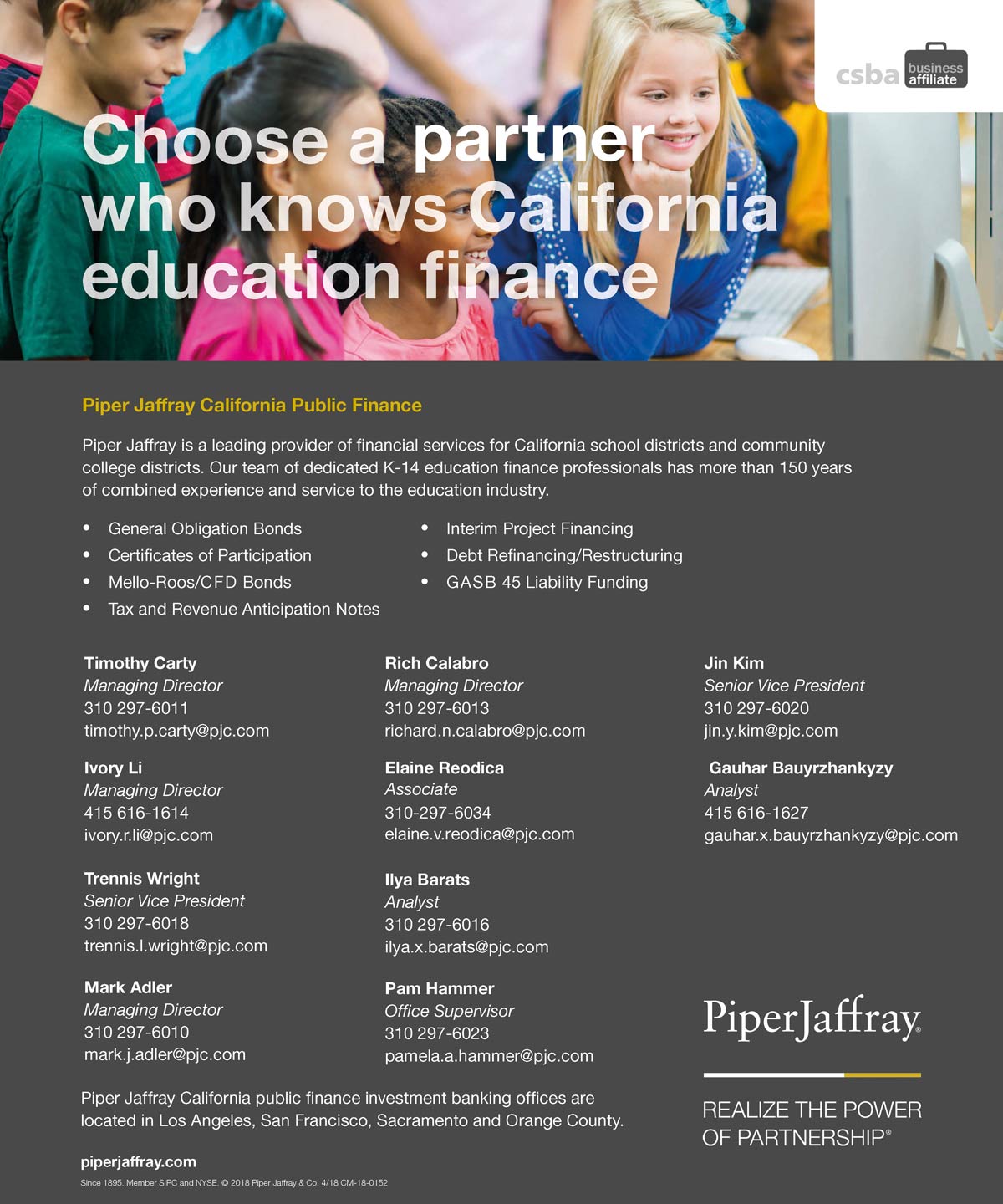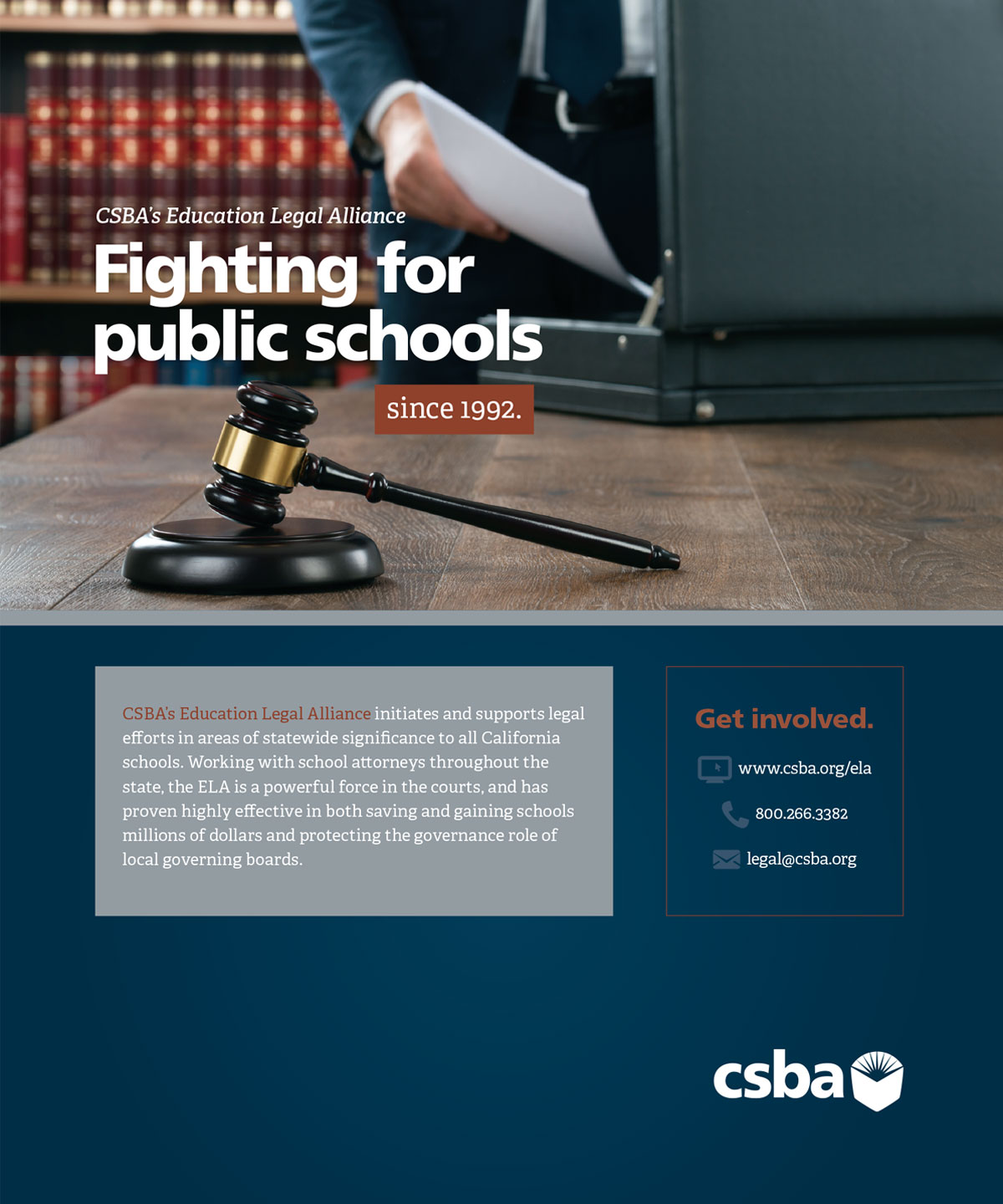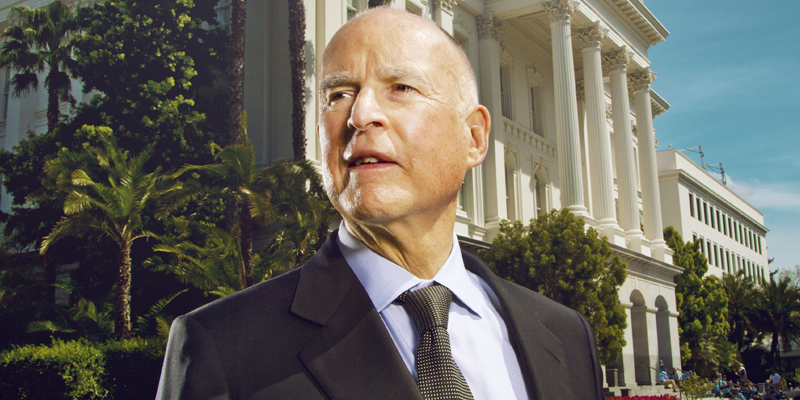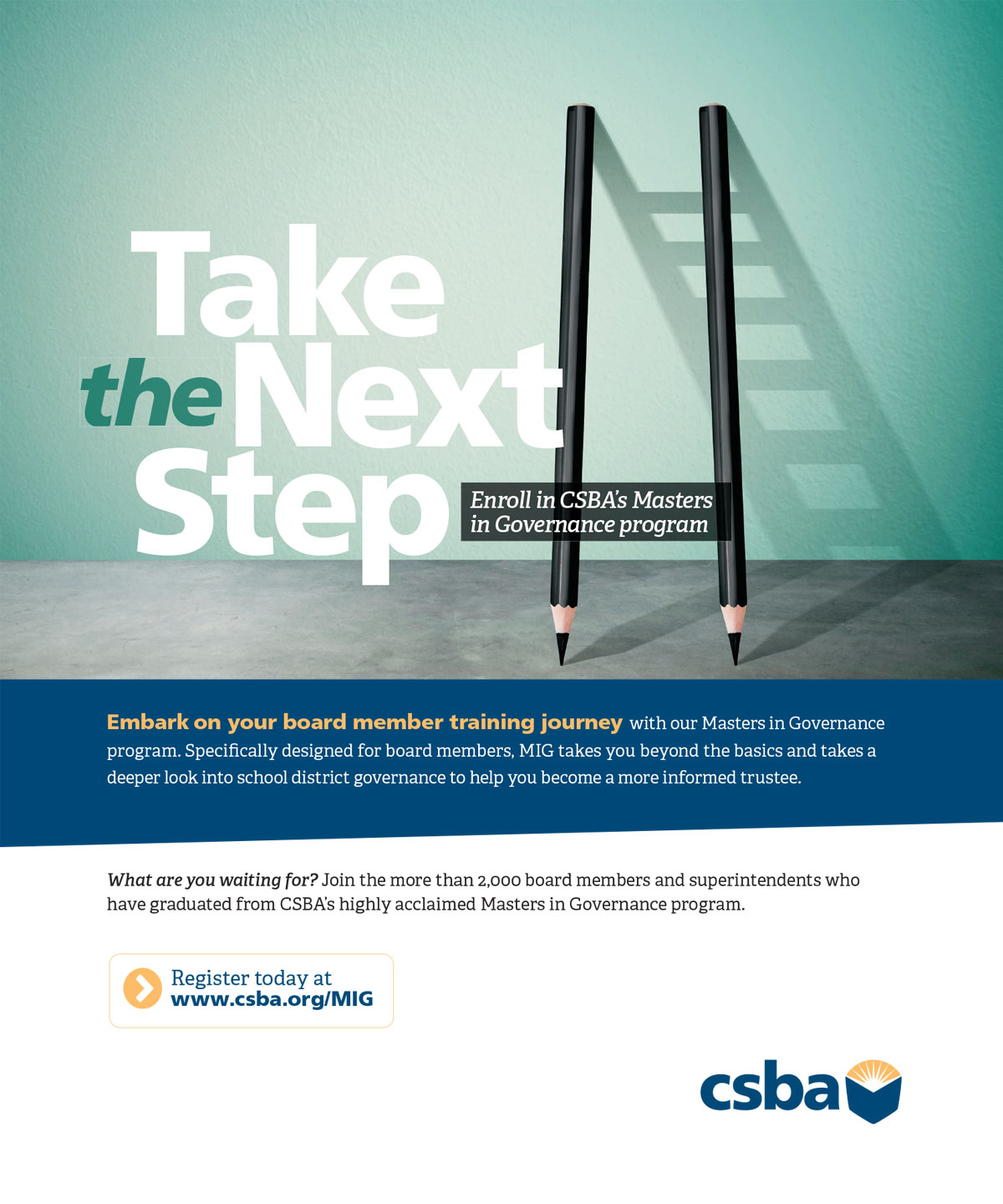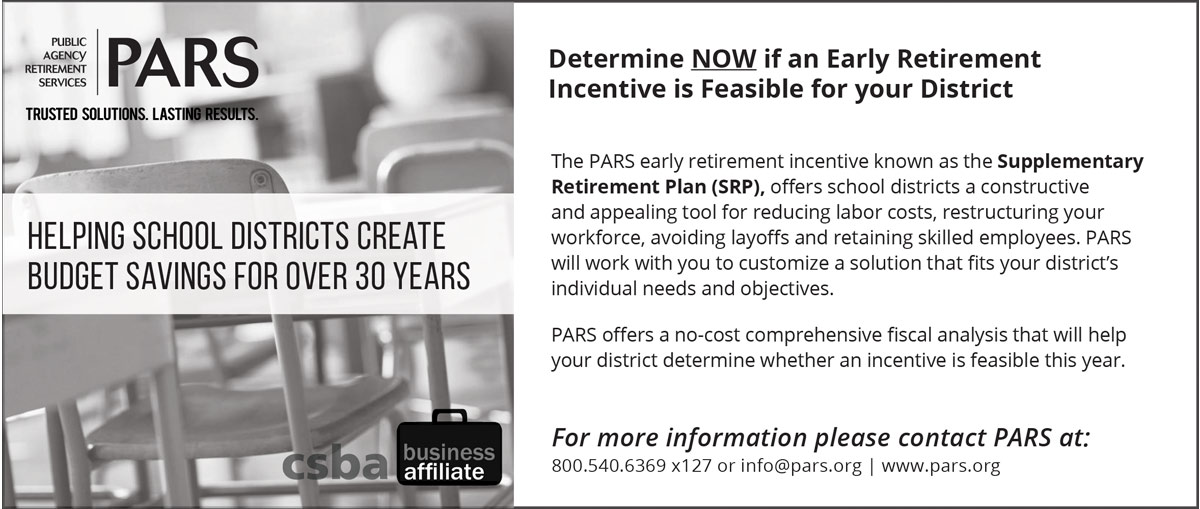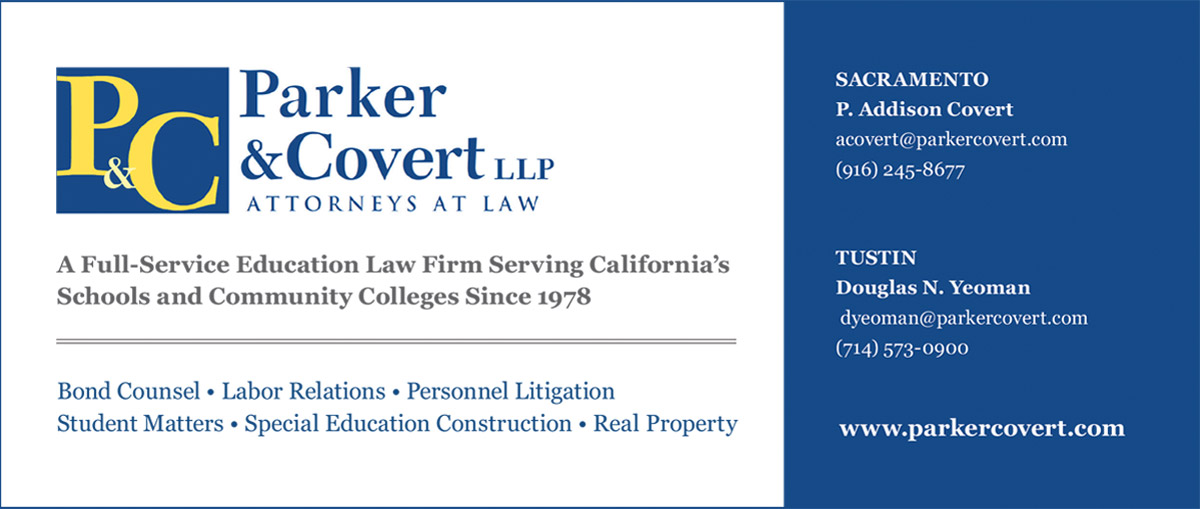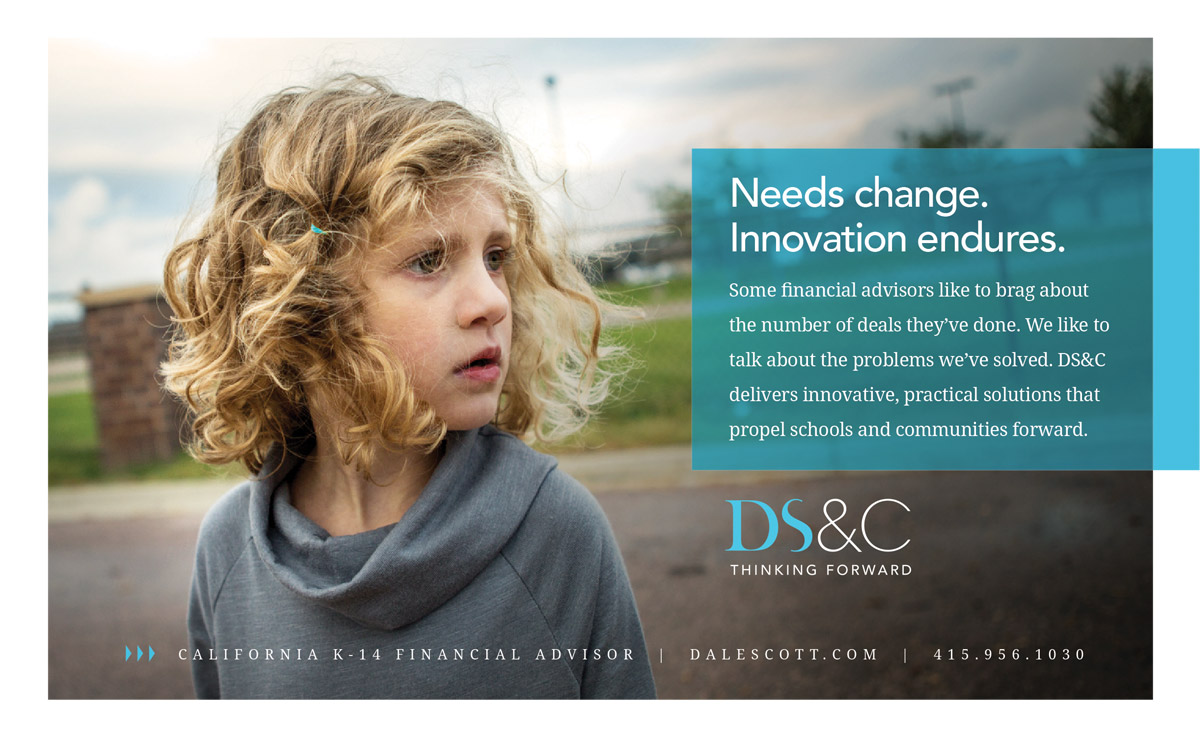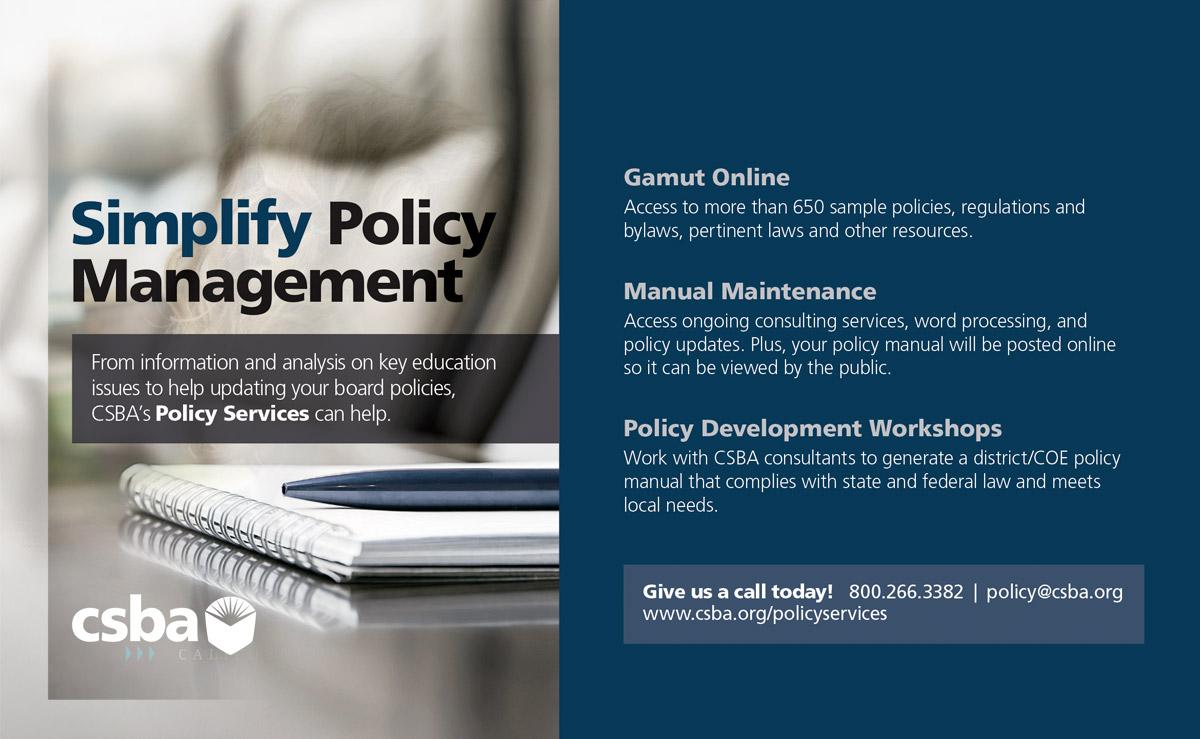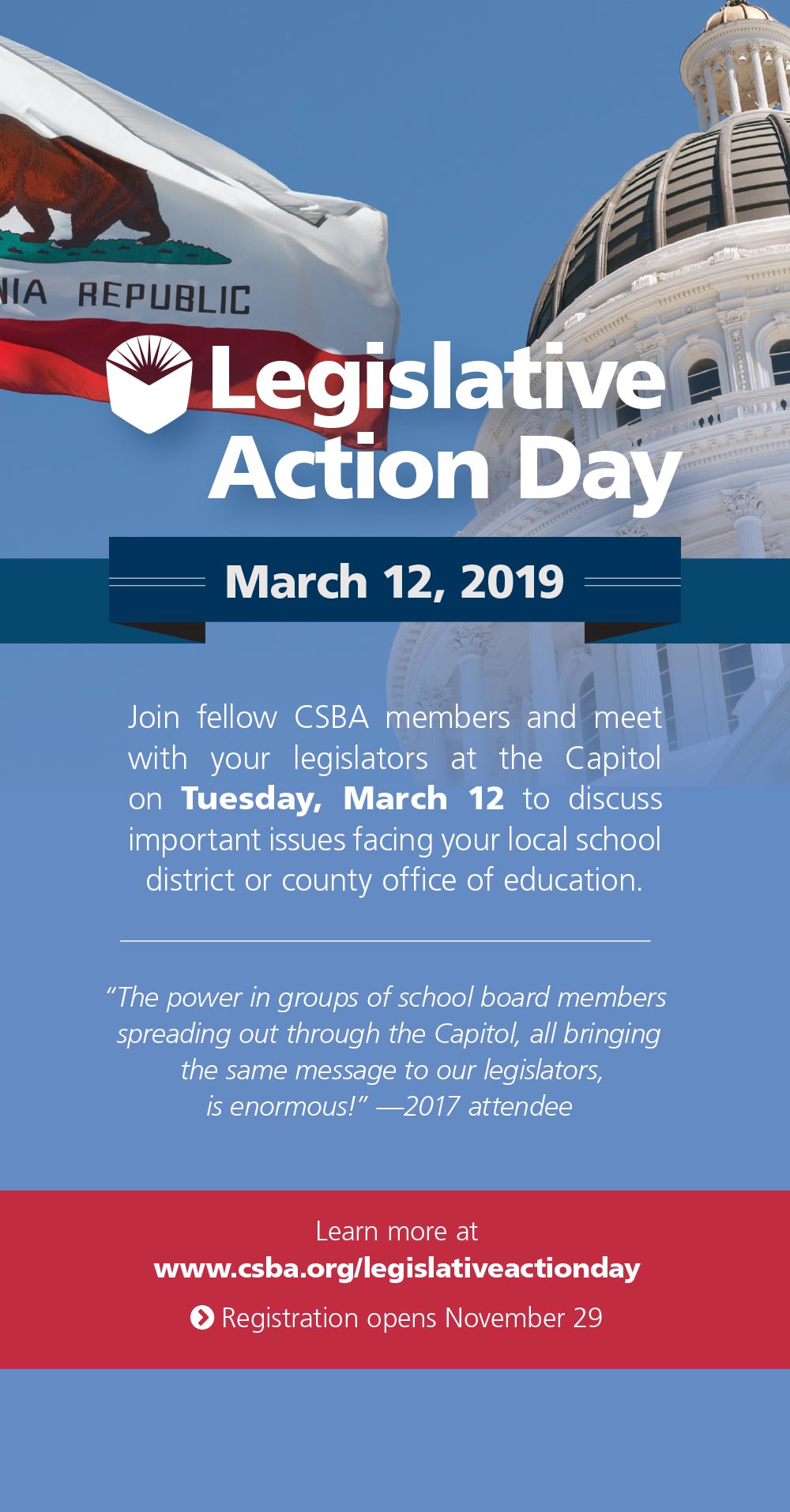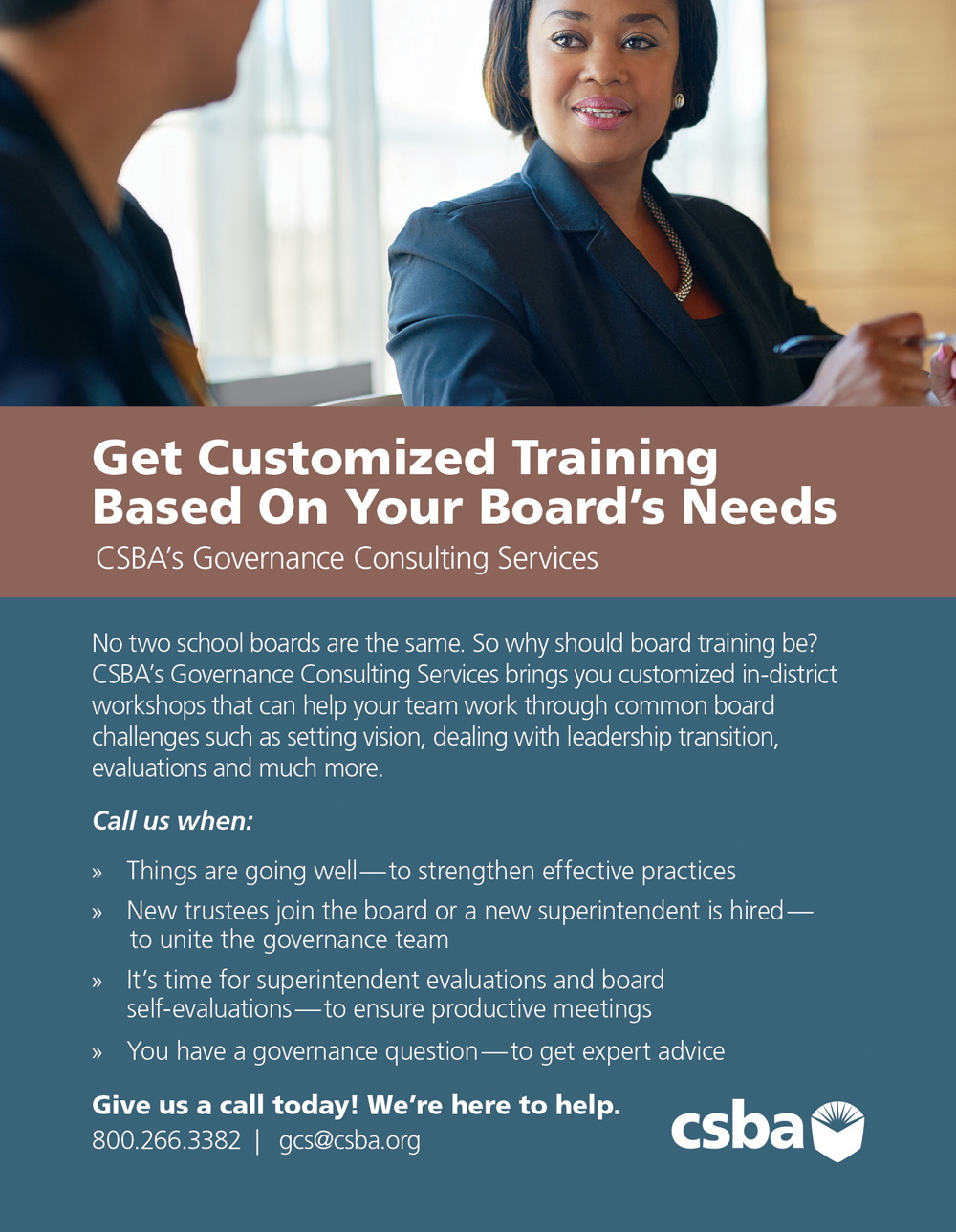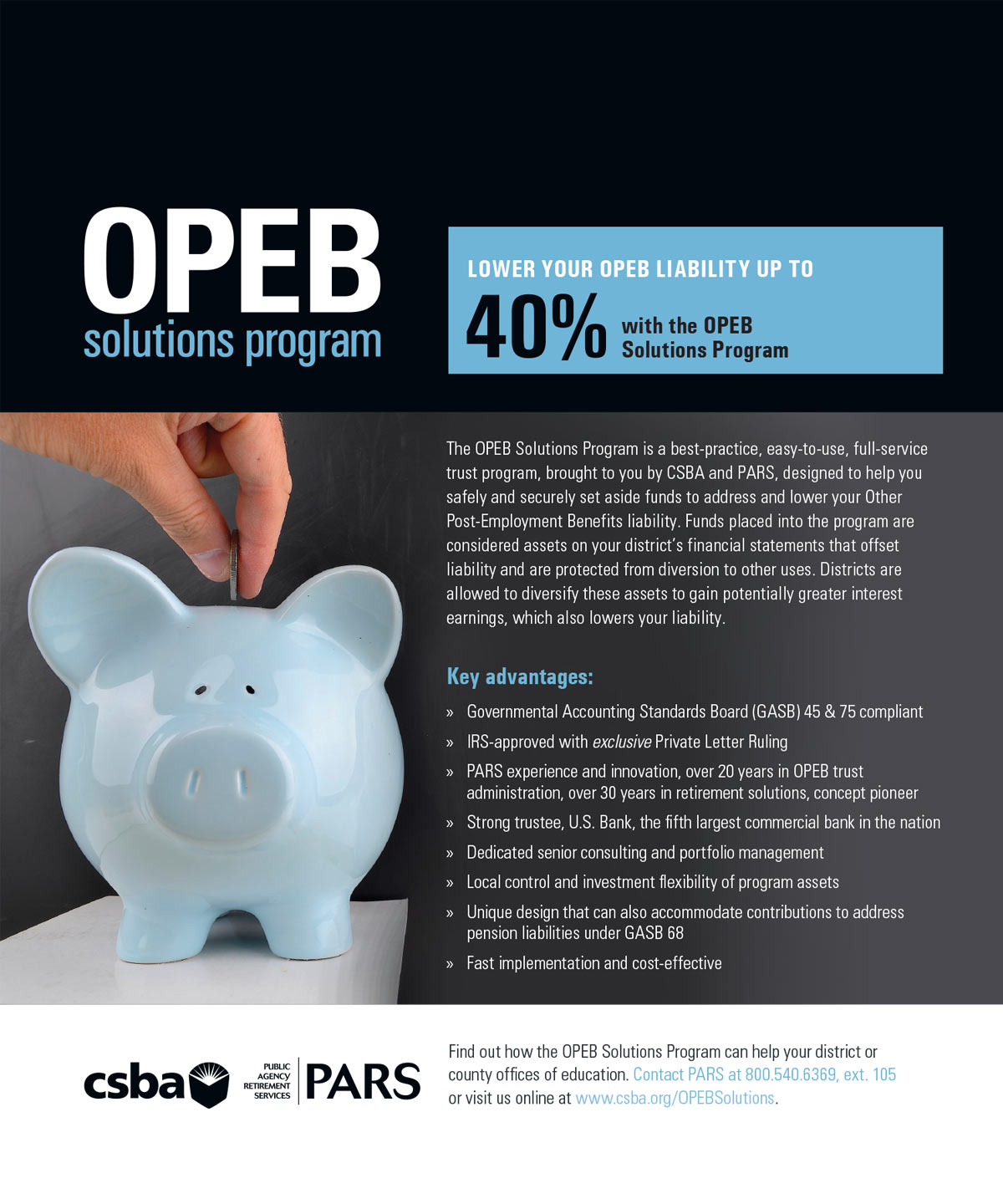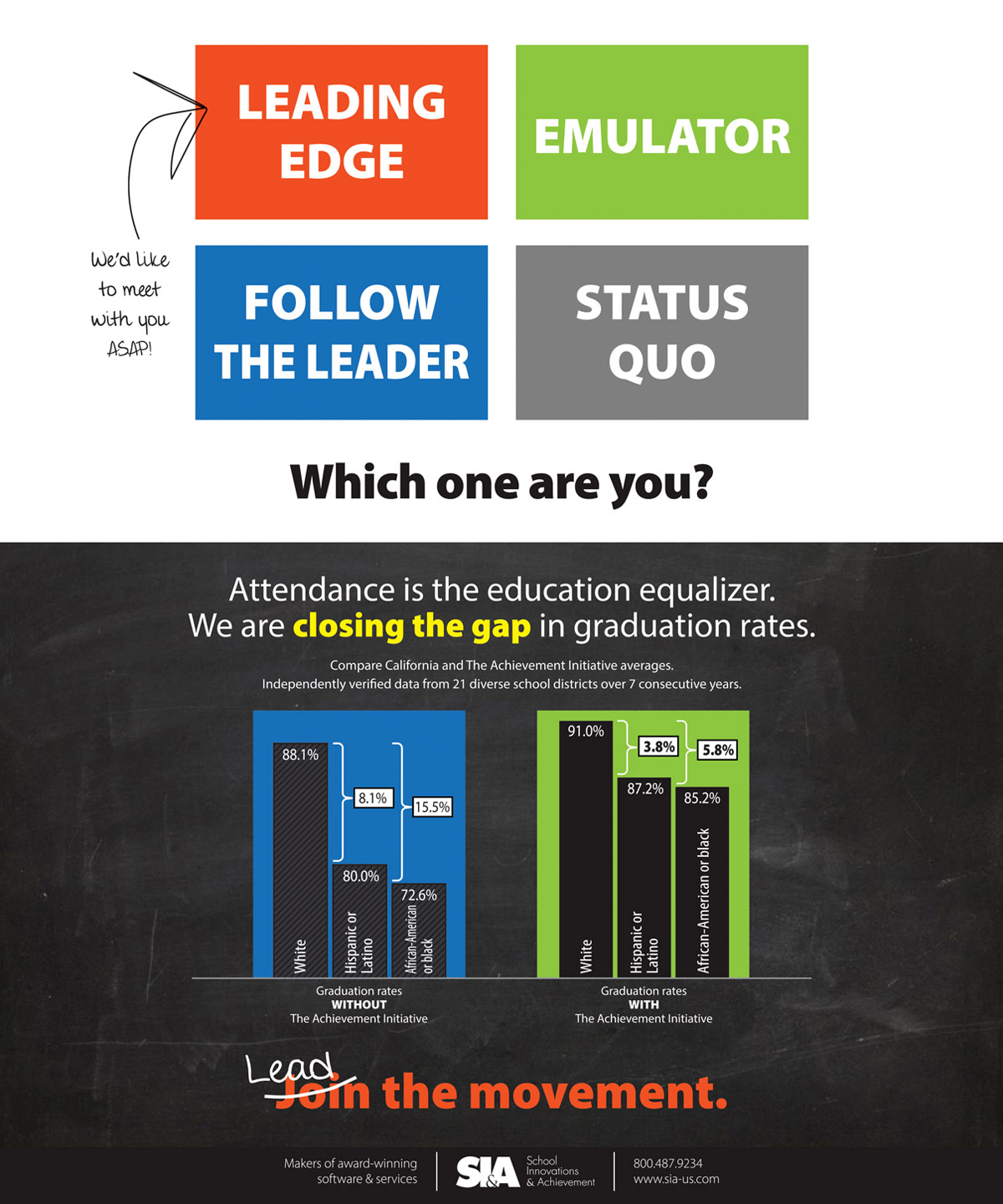

Grading Jerry Brown on education


Grading Jerry Brown on education


Grading Jerry Brown on education

Winter 2018
California’s new model of accountability and assistance
by California Department of Education, California Collaborative for Educational Excellence and State Board of Education
by Aaron Davis
by Vernon M. Billy
by Steve Ladd, Arati Nagaraj, Sepideh Yeoh
by Mike Ambrose
By Robin Avelar La Salle and Ruth Johnson
By Manuel Buenrostro and Carlos Machado
Interview with Tommy Courtney
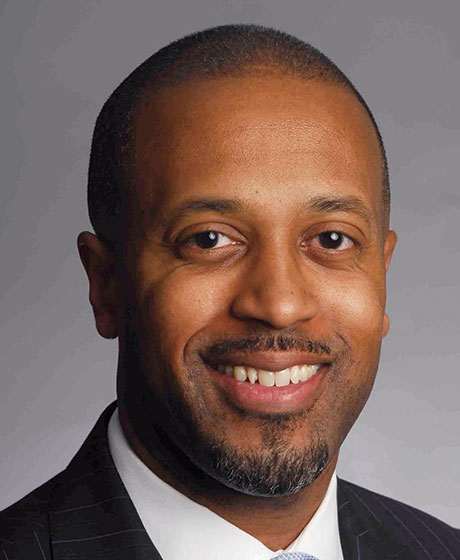
CEO’s note
by Vernon M. Billy
Education, protests & freedom of speech are the ties that bind our republic
Students are the future torchbearers of liberty
I hope I got your attention…
By the time you read this, the November 2018 election will be history and the outcomes of Election Day will have been debated and analyzed by every political pundit and pollster. This analysis, such as it were, is welcomed by political junkies and policy wonks across the political spectrum. But underneath all this analysis (or noise) is the fact that Election Day reflects several fundamental underpinnings of our democracy (democratic republic) on which we must continue to educate students if we truly believe in our founding documents and value the duties bequeathed to every citizen.

Region 1, Fort Bragg USD
Sherry Crawford
Region 2, Siskiyou COE
A.C. “Tony” Ubalde, Jr.
Region 3, Vallejo City USD
Paige Stauss
Region 4, Roseville Joint Union HSD
Alisa MacAvoy
Region 5, Redwood City ESD
Darrel Woo
Region 6, Sacramento City USD
Yolanda Peña Mendrek
Region 7, Liberty Union HSD
Matthew Balzarini
Region 8, Lammersville Joint USD
Region 9, Atascadero USD
Susan Markarian
Region 10, Pacific Union ESD
Suzanne Kitchens
Region 11, Pleasant Valley SD
William Farris
Region 12, Sierra Sands USD
Meg Cutuli
Region 15, Los Alamitos USD
Karen Gray
Region 16, Silver Valley USD
Katie Dexter
Region 17, Lemon Grove SD
Wendy Jonathan
Region 18, Desert Sands USD
Region 20, Santa Clara USD
Kelly Gonez
Region 21, Los Angeles USD
Keith Giles
Region 22, Lancaster ESD
Helen Hall
Region 23, Walnut Valley USD
Donald E. LaPlante
Region 24, Downey USD
Shelly Yarbrough
Director-at-Large American Indian, Val Verde USD
Robert Gin
Director-at-Large Asian/Pacific Islander,
Alhambra USD
Director-at-Large African American,
Monterey Peninsula USD
Heidi Weiland
Director-at-Large County, El Dorado COE
Kathryn Ramirez
Director-at-Large Hispanic, Salinas Union HSD
Bruce Dennis
CCBE President, Riverside COE
Frank Pugh
NSBA President, Santa Rosa City Schools
Micah Ali
NSBA Director, Compton USD
Chris Ungar
NSBA Director, San Luis Coastal USD

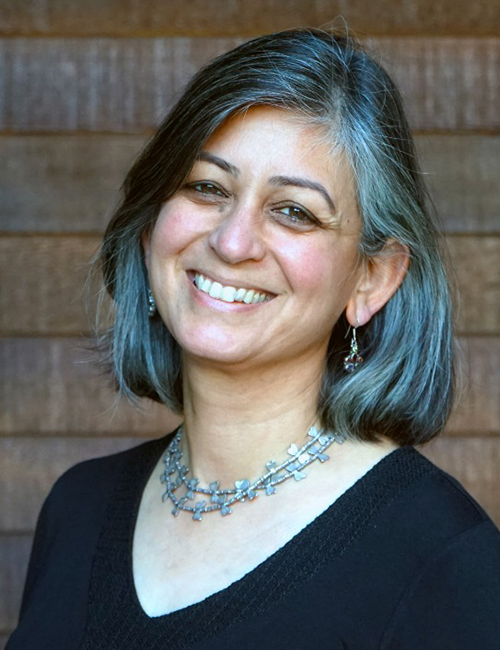

BoardWise
by Steve Ladd, Arati Nagaraj, Sepideh Yeoh
BoardWise is a forum for board members and superintendents across the state to share questions about governance and board–superintendent relations. Send your questions to boardwise@csba.org.
This year, in addition to our column regulars, Deb Dudley and Luan Burman Rivera, we are welcoming new consultants to the column. Consultants Sepideh Yeoh and Steve Ladd were recently introduced in columns earlier this year. This issue introduces Arati Nagaraj, a board member of the Saratoga Union School District since 2010. She is a Governance Consultant with CSBA’s Governance Consulting Services, developing customized board development workshops for governance teams.
Ensuring board member engagement
Dear BoardWise,
There is a board member on our board who is disengaged and uninterested. This is particularly noticeable at board meetings when this member opens their meeting packet minutes before we start. How do we address this issue?
Steve Ladd: “Prior planning prevents poor performance” is an adage that is often provided as a motivation to ensure that individuals are prepared before they undertake any particular responsibility. As a board member, being prepared is not only imperative, it is also a responsibility for the collective governance team.

Troy Flint, tflint@csba.org
Managing Editor
Kimberly Sellery, ksellery@csba.org
Marketing Director
Serina Pruitt, spruitt@csba.org
Staff Writers and Contributors
Hugh Biggar, hbiggar@csba.org
Andrew Cummins, acummins@csba.org
Aaron Davis, adavis@csba.org
Graphic Design Manager
Kerry Macklin, kmacklin@csba.org
Senior Graphic Designer
Carmen Rodriguez, crodriguez@csba.org
Circulation and Advertising
csba@csba.org
Mike Walsh, Butte COE
President-elect
Emma Turner, La Mesa-Spring Valley SD
Vice President
Xilonin Cruz-Gonzalez, Azusa USD
Immediate Past President
Susan Henry, Huntington Beach Union HSD
CEO & Executive Director
Vernon M. Billy
Articles submitted to California Schools are edited for style, content and space prior to publication. Views expressed are those of the authors and do not necessarily represent CSBA policies or positions. Articles may not be reproduced without written permission of the publisher. Endorsement by CSBA of products and services advertised in California Schools is not implied or expressed.

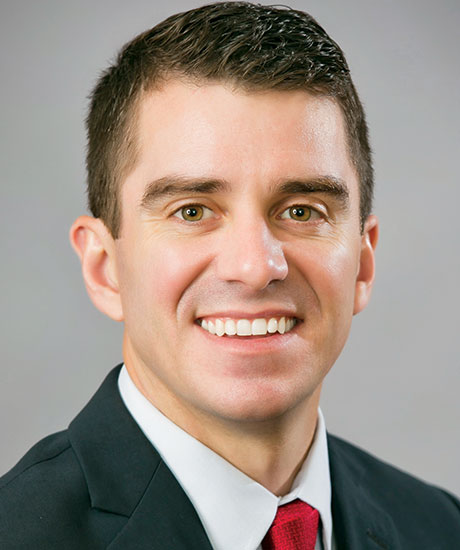
legal insights
BY MIKE AMBROSE
Protecting existing school funding while fighting for Full and Fair Funding
ull and Fair Funding is crucial for student success, and research continues to demonstrate that increasing funding to education makes an important and lasting impact on students, particularly for students in high-need and low-income schools1. Nonetheless, despite boasting the fifth-largest economy in the world and the highest gross domestic product of any state, California sits near the bottom nationally in nearly every significant measure of school funding and school staffing. Even with improvements to funding levels in recent years, California remains well behind most of the country. Adjusted for cost of living, California ranks just 41st in per-pupil funding.
California school funding is further limited by Proposition 13, enacted in 1978, which in part prohibits school districts from raising local property tax rates, forcing California schools to rely more on state funding than schools in other states. As a result, schools in California suffer disproportionally from underinvestment from the state.
A 2015 CSBA report on education funding, California’s Challenge: Adequately Funding Education in the 21st Century, found that K-12 education in the state was underfunded by $22 billion to $42 billion2. The recently published Getting Down to Facts II report found that an additional $22.1 billion would have been necessary to ensure all students had the opportunity to meet the state’s education goals in the 2016–17 school year3.
California education is deeply in need of additional resources.
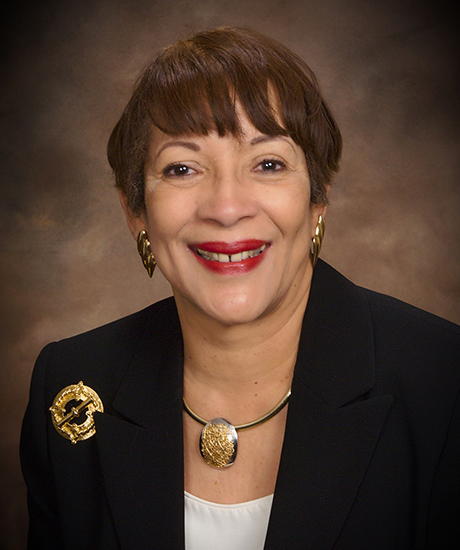
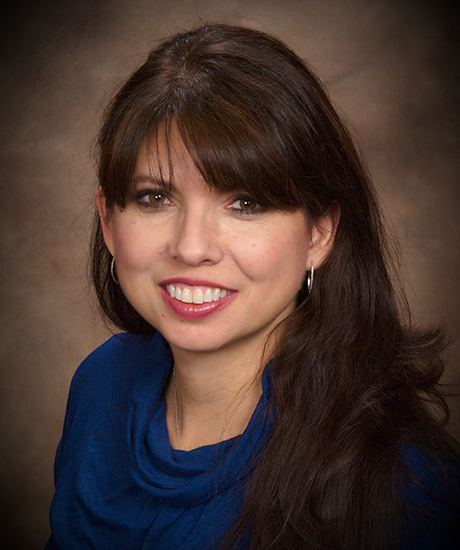
from the field
By Robin Avelar La Salle and Ruth Johnson
Shattering inequities: One school’s story
ico-Union is one of the most socioeconomically challenged neighborhoods in the city of Los Angeles. More than 44,000 people live in a 1.67-square-mile area, making it one of the highest density places to live in the county. Sixty-five percent of the residents are Latino and immigrant, mostly from Mexico and Central America. Pico-Union is in the top 17 percent for number of violent crimes in L.A. Seven percent of residents have a four-year college degree and 66 percent did not complete high school.
In the midst of this challenged neighborhood sits Hoover Street Elementary School. It is ranked No. 1 in achievement compared to other schools with similar demographics in California (EdResults, 2017). Hoover is in the top 30 percent of all schools in the state for achievement and has been identified as a model of excellence in educating students, especially English learners. With this success in mind, California Department of Education officials, as well as community members and business people from across the state, have visited this impressive school.
Hoover is a K-5 neighborhood public school of about 800. Although several charter schools are nearby, Hoover still has a waiting list of students. Each morning, students enter by walking beneath an overpass that reads, “The door to college opens here.” At every assembly, students shout proudly, “Believe it, achieve it!” The school front is almost entirely covered in achievement banners earned over the past seven years.
class act: Best practices in action
class act:
Best practices in action
class act:
Best practices in action
A small district achieves big success in STEM
ucerne Valley Unified School District sits at the base of the San Bernardino National Forest in the Mojave Desert. A small, rural district consisting of an elementary school and a middle/high school, Lucerne Valley USD serves about 750 students who come from the surrounding 600 square miles. Due to declining enrollment and other financial constraints, resources are sometimes spread thin, and the district struggled to provide top-quality STEM — or science, technology, engineering and math — programs. That all changed when students at Lucerne Valley Elementary School began the 2018–19 school year with a new, state-of-the-art STEM lab, also called a SmartLab by the district. But how did they do it?
With advocacy from the school board team and support from the community — including contributions from longtime supporter the Mitsubishi Cement Corporation Educational Foundation — the district funded the lab. The board of trustees voted to award the contract to Creative Learning Systems, which has a 30-year history of developing labs that put technology in the hands of students and engage them with personalized, project-based learning.
“We are currently preparing students for jobs that don’t currently exist,” said Lucerne Valley USD trustee Tom Courtney. “We must be competitive with the rest of the world when it comes to engineering, technology and science. We are giving our students a fair shake to be competitive in a worldwide global system.”

csba at issue
BY MANUEL BUENROSTRO AND CARLOS MACHADO
An urgent need to improve charter school governance
quality public school for every child remains a vision that every district strives to achieve, and access to a great public education remains the most important driver for students to achieve their potential. This vision is exactly why California leaders have an obligation to closely evaluate and rethink charter schools, how they are overseen and their impact on our public school system.
In September 2018, CSBA released Uncharted Waters: Recommendations for Prioritizing Student Achievement and Effective Governance in California’s Charter Schools as the culmination of the work of the CSBA Charter Schools Task Force, which began exploring these issues two years ago.
This report presents key policy, advocacy and support recommendations related to charter schools and includes a vision on four focus areas of critical importance: quality expectations, equitable access and equity, governance and transparency, and elevating and replicating what works in public education.
How long have you been a board member?
I have been a board member for 24 years. I have been a member of the [CSBA] Delegate Assembly for about 19 years. I have also served on the Nominating Committee, Policy Platform Committee, Program Improvement Committee and Small School Districts Council as Chair.
What three books that left a lasting impression on you?
Great Expectations, Something of Value and Clan of the Cave Bear.
Who was your favorite teacher and why?
My favorite teacher was Ruth Ann Morgan. She was very strict but always told me what a great memory I had and that I should find something in life that required a good memory. She always made me feel good about myself. She also taught my mom and dad, plus my uncles and aunts, so she knew us all. There was a crack in the wall in the rear of her class, and she always said she threw a rock because the kids were unruly. No one could verify it, though. She also could spin tops and spike you out of the circle like a champ.
What inspired you to become a trustee?
I was involved in Little League for 13 years and was asked to help start our first booster club at the high school, “The Wild Bunch,” (our mascot is a mustang). I was asked by those parents to run for the board and the rest is history.
What job duties do you have apart from serving on the school board?
I have served as board president, vice president, clerk, and also serve on our county superintendent’s [committee] San Bernardino County School Board Members for Better Schools. This has all been very educational for me as a general contractor in real life. I might add that training from CSBA for Masters in [Governance] has helped me to deal with local and state officials both in my school board role and as a general contractor.
Who inspires you as a trustee?
I have met many great school board members in my life as a trustee, but our current board president Jim Harvey has been a great inspiration and colleague for eight years. He wrote our district’s board member’s handbook and is asked often to put on workshops about it. He was instrumental in our board becoming the first, as far as we know, to adopt a transparency policy. This requires our trustees complete the State of California Ethics training for elected officials. He also is knowledgeable in the Brown Act and at times has corrected and provided the proper instruction in Brown Act language. His knowledge and leadership has pushed our school board to new heights, and I am very inspired by his attention to the task.
Would you like to participate in an upcoming Member Profile? Contact us at editor@csba.org.


How long have you been a board member?
I have been a board member for 24 years. I have been a member of the [CSBA] Delegate Assembly for about 19 years. I have also served on the Nominating Committee, Policy Platform Committee, Program Improvement Committee and Small School Districts Council as Chair.
What three books that left a lasting impression on you?
Great Expectations, Something of Value and Clan of the Cave Bear.
Who was your favorite teacher and why?
My favorite teacher was Ruth Ann Morgan. She was very strict but always told me what a great memory I had and that I should find something in life that required a good memory. She always made me feel good about myself. She also taught my mom and dad, plus my uncles and aunts, so she knew us all. There was a crack in the wall in the rear of her class, and she always said she threw a rock because the kids were unruly. No one could verify it, though. She also could spin tops and spike you out of the circle like a champ.
What inspired you to become a trustee?
I was involved in Little League for 13 years and was asked to help start our first booster club at the high school, “The Wild Bunch,” (our mascot is a mustang). I was asked by those parents to run for the board and the rest is history.
What job duties do you have apart from serving on the school board?
I have served as board president, vice president, clerk, and also serve on our county superintendent’s [committee] San Bernardino County School Board Members for Better Schools. This has all been very educational for me as a general contractor in real life. I might add that training from CSBA for Masters in [Governance] has helped me to deal with local and state officials both in my school board role and as a general contractor.
Who inspires you as a trustee?
I have met many great school board members in my life as a trustee, but our current board president Jim Harvey has been a great inspiration and colleague for eight years. He wrote our district’s board member’s handbook and is asked often to put on workshops about it. He was instrumental in our board becoming the first, as far as we know, to adopt a transparency policy. This requires our trustees complete the State of California Ethics training for elected officials. He also is knowledgeable in the Brown Act and at times has corrected and provided the proper instruction in Brown Act language. His knowledge and leadership has pushed our school board to new heights, and I am very inspired by his attention to the task.
Would you like to participate in an upcoming Member Profile? Contact us at editor@csba.org.
Thank you
to the 2018-19 CSBA Business Partners and Business Affiliates.
Visit them on the Trade Show Floor at the Annual Education Conference and Trade Show, Nov. 29 and Nov. 30, 2018 in San Francisco!
Business Partners
3E Company
Bridg-It
Dale Scott & Company
Demsey Filliger & Assoc.
Lou Barber & Assoc.
McPherson & Jacobson LLC
Myers Stevens & Toohey (MST)
Orrick, Herrington, & Sutcliffe
PARS
Piper Jaffray & Co.
School Innovations & Achievement (SI&A)
Total School Solutions
U.S. Bank Corporate Trust
Business Affiliates
Premier Level
Atkinson, Andelson, Loya, Ruud & Romo
Dannis Woliver Kelley
Fagen Friedman & Fulfrost LLP
Lozano Smith
Northern California Carpenters Regional Council
Piper Jaffray & Co.
Principal Level
Burke, Williams & Sorensen, LLP
Climatec
Dale Scott & Company
U.S. Communities Government Purchasing
“What nobler employment, or more valuable to the state than that of the man who instructs the rising generation?”
— Marcus Tullius Cicero
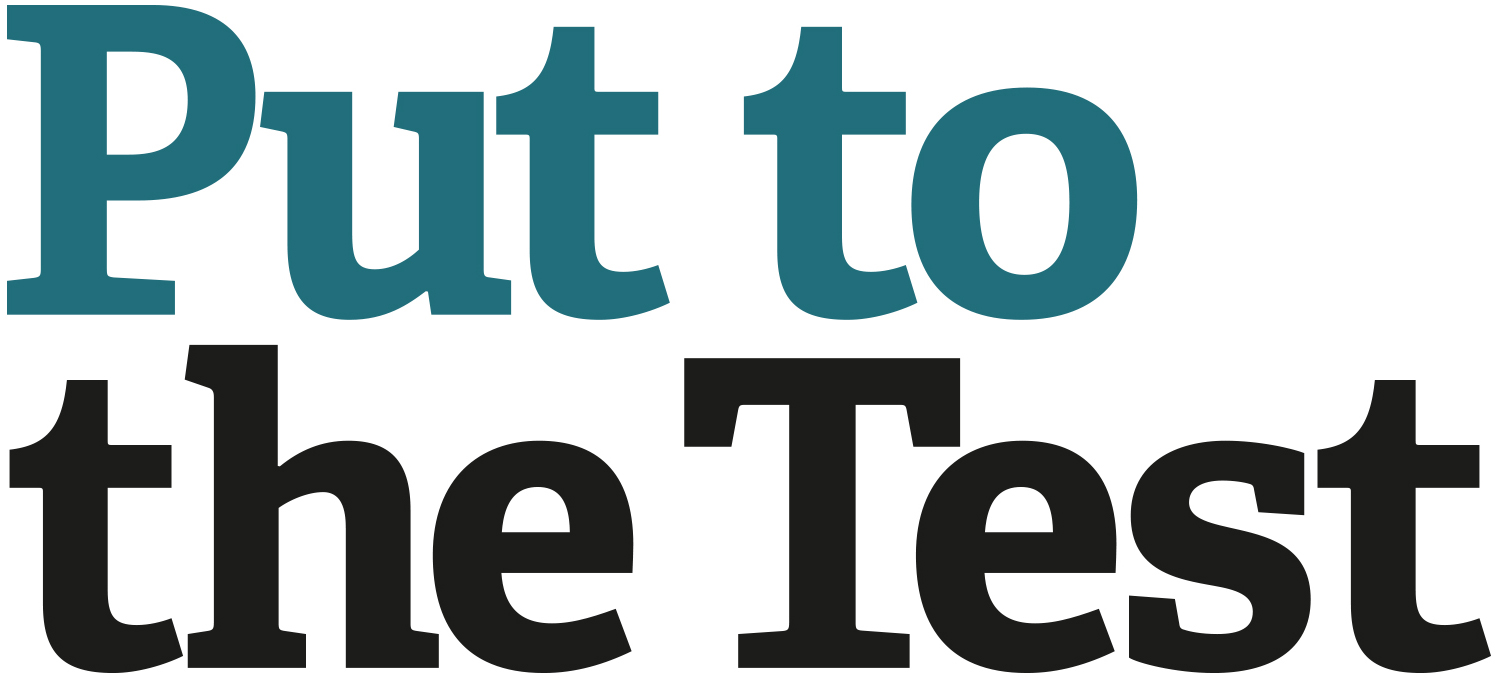
Grading Jerry Brown on education
by Troy Flint
Edmund Gerald Brown Jr. is California’s 34th and 39th Governor, a scion of the state’s most famous political family, a former seminarian and a classics scholar known to pepper his oratory with Latin. It’s probably no coincidence that the Roman philosopher and politician Marcus Tullius Cicero ranks among his favorite thinkers.
In one of Cicero’s more famous works, De re publica, he argues that the ideal citizen is the philosopher-statesman, as he is most capable of managing a city’s affairs well.
Cicero’s writing heavily influenced the founding fathers, as well as Brown, who compared his speeches to a symphony and considered them “the clearest you would ever want to read.”1
Brown’s appreciation for the ancient world deepened during his time at Sacred Heart Seminary, but dates back to his days at San Francisco’s St. Ignatius High. At St. Ignatius, pupils studied Latin five days a week and honor students took Greek — the only other language offered.
Although St. Ignatius was an elite school, it also prided itself on an egalitarian streak. In the words of Brown family biographer, Miriam Pawel, “St. Ignatius drew students from all over the city, its reputation based on achievement rather than the social stature of parents. Working-class kids mingled with children of the elite, embodying the California idea of education as the great equalizer and avenue to upward mobility.” Education as an engine for equality and prosperity (and political necessity) is central not only to California’s self-image, but also to the Brown family history.
“There’s a wonderful story I heard Kathleen [Brown] tell in her father’s presence and that Jerry told at his father’s funeral,” recalled former California State Assemblymember and Superintendent of Public Instruction Delaine Eastin. The story concerns an exchange between Pat Brown, who served as California’s 32nd Governor and — until Jerry — its longest-serving chief executive, and his wife, Bernice.
“It’s the day after he was elected Governor and Pat is in the car. He turns to Bernice and said, ‘We lost Orange County, we lost San Diego County, and we lost Santa Cruz County — what are we going to do to win them next time?’ Bernice said, ‘You’re going to have to educate them. So, Pat built UCSD, UC Irvine, and UC Santa Cruz — one Governor built one-third of UC.’”
That calculation, combined with the desire to increase social mobility and provide greater college access for a burgeoning population, resulted in The California Master Plan. Adopted in 1960, the Master Plan essentially made California the first state to, in theory at least, guarantee universal access to higher education. Along with the California State Water Project, the Master Plan became the most enduring part of Pat Brown’s legacy.

Grading Jerry Brown on education
by Troy Flint
Edmund Gerald Brown Jr. is California’s 34th and 39th Governor, a scion of the state’s most famous political family, a former seminarian and a classics scholar known to pepper his oratory with Latin. It’s probably no coincidence that the Roman philosopher and politician Marcus Tullius Cicero ranks among his favorite thinkers.
In one of Cicero’s more famous works, De re publica, he argues that the ideal citizen is the philosopher-statesman, as he is most capable of managing a city’s affairs well.
Cicero’s writing heavily influenced the founding fathers, as well as Brown, who compared his speeches to a symphony and considered them “the clearest you would ever want to read.”1
Brown’s appreciation for the ancient world deepened during his time at Sacred Heart Seminary, but dates back to his days at San Francisco’s St. Ignatius High. At St. Ignatius, pupils studied Latin five days a week and honor students took Greek — the only other language offered.
Although St. Ignatius was an elite school, it also prided itself on an egalitarian streak. In the words of Brown family biographer, Miriam Pawel, “St. Ignatius drew students from all over the city, its reputation based on achievement rather than the social stature of parents. Working-class kids mingled with children of the elite, embodying the California idea of education as the great equalizer and avenue to upward mobility.” Education as an engine for equality and prosperity (and political necessity) is central not only to California’s self-image, but also to the Brown family history.
“There’s a wonderful story I heard Kathleen [Brown] tell in her father’s presence and that Jerry told at his father’s funeral,” recalled former California State Assemblymember and Superintendent of Public Instruction Delaine Eastin. The story concerns an exchange between Pat Brown, who served as California’s 32nd Governor and — until Jerry — its longest-serving chief executive, and his wife, Bernice.
“It’s the day after he was elected Governor and Pat is in the car. He turns to Bernice and said, ‘We lost Orange County, we lost San Diego County, and we lost Santa Cruz County — what are we going to do to win them next time?’ Bernice said, ‘You’re going to have to educate them. So, Pat built UCSD, UC Irvine, and UC Santa Cruz — one Governor built one-third of UC.’”
That calculation, combined with the desire to increase social mobility and provide greater college access for a burgeoning population, resulted in The California Master Plan. Adopted in 1960, the Master Plan essentially made California the first state to, in theory at least, guarantee universal access to higher education. Along with the California State Water Project, the Master Plan became the most enduring part of Pat Brown’s legacy.
Calling for California Leaders to Shift their School Culture of Safety
The will to protect our students and end school violence is strong, but it will take a movement of courageous and proactive school leaders stepping up and leading the shift to create a more positive school culture. Bridg-it was created, designed and constantly being tweaked to support this movement.
This year alone, total spending on school safety nationwide is in the hundreds of millions of dollars, and for good reason. In the first 21 weeks of 2018, we saw on average one school shooting per week where someone was hurt or killed. The safety climate in schools is worse when taking into consideration daily bullying and online bullying, identity threats, sexual misconduct, and other forms of violence.
A study analyzing the results of the California Healthy Kids Survey found that schools with unsafe learning environments face major financial losses. California school districts receive funding based on the average number of students in the classroom and absenteeism cuts into that funding. Approximately 10.4% of secondary school students in California reported missing school because they were bullied or felt unsafe, costing the state an estimated $276 million in one year.
What School Board Members Need to Know about the #MeToo Movement in California
Eve P. Fichtner, Partner, and Jessica T. GasbarrO, Senior Associate Atkinson, Andelson, Loya, Ruud & Romo

When the #MeToo Movement gained momentum during the 2017-18 school year, school officials predicted a rise in sexual harassment complaints by students and employees. Many of our clients confirmed this to be true, and the trend is likely to continue. Additionally, we are seeing these complaints “go viral.” School Boards can better prepare for these complaints by reviewing sexual harassment policies, procedures, and practices that may be outdated, underused, or inconsistently implemented. Attention should also be given to media relations and social media policies so Board members are aware of how to communicate with the media. While online posts can be an important communication tool, Board members must understand their role under their policies and the Brown Act.
With the spotlight on #MeToo in the media, it is crucial that entities understand the rights of individuals to have a voice in the process. Both complainants and respondents must be given the opportunity to be heard. We have noticed an overuse of explicit or implicit “gag orders” to silence complainants and respondents especially during the investigation process. This practice can be contrary to free speech, Title IX and Title VII. On the other hand, social media and electronic news may get out of hand if not properly monitored and navigated. Boards should be aware that all investigations must be handled thoroughly and promptly, but some may require the approval of outside investigators who can navigate these legal issues.
What can Gov.-Elect Newsom do for Schools?
Suggestions for the New Governor
California Schools magazine asked some of California’s education thought leaders how Gov. Newsom can best support public schools. Here are their answers:
Vernon M. Billy
CEO & Executive Director, California School Boards Association
“Gov. Newsom has an opportunity to shape public education for decades by supporting efforts to fully and fairly fund preK-12 education and encourage alignment between the preK-12, community college, and university systems. If he accomplishes both of those goals, he will leave a generational legacy that restores the glory of California schools and extends the state’s prosperity well into the future.”
More immediately, Gov. Newsom can support students and respect the will of the voters by releasing $7 billion in critical funding to update aging K-12 facilities, build new schools and provide funding for Career Technical Education facilities. In November 2016, the electorate overwhelmingly approved Proposition 51 to provide $9 billion for the renovation, modernization and construction of school facilities. More than two years later, less than 20 percent of the promised money has been allocated to school districts and county offices of education, leaving them unable to address their pressing facility needs. The new Governor can secure an easy win for students and for the democratic process by making these funds available so schools can provide safe, welcoming and stimulating environments where 21st century learning can take place.
10 steps to Accelerate Progress in California’s Public Schools
10 steps to Accelerate Progress in California’s Public Schools
10 steps to Accelerate Progress in California’s Public Schools
CSBA welcomes Gov. Newsom to his new role as California’s chief executive and offers the following suggestions on how he can best support public schools:
- Boost early childhood education by supporting quality, evidenced-based pre-K programs without forcing districts to further dilute the resources currently committed to K-12 students
- Fund initiatives to help address teacher recruitment and retention, such as student loan forgiveness, incentive programs and expanded teacher preparation and pathway strategies like fast-track credentialing and residency programs
- Support programs and proposals that fund full-service community schools, including funding for technical assistance to help local districts and county offices of education apply for federal funding
CSBA welcomes Gov. Newsom to his new role as California’s chief executive and offers the following suggestions on how he can best support public schools:
- Boost early childhood education by supporting quality, evidenced-based pre-K programs without forcing districts to further dilute the resources currently committed to K-12 students
- Fund initiatives to help address teacher recruitment and retention, such as student loan forgiveness, incentive programs and expanded teacher preparation and pathway strategies like fast-track credentialing and residency programs
- Support programs and proposals that fund full-service community schools, including funding for technical assistance to help local districts and county offices of education apply for federal funding


Source: State Board of Education
Leading your District through a Successful Attendance Boundary Change Process
How using a unique fusion of technology, process and analytics can help leaders make informed, data-driven decisions.
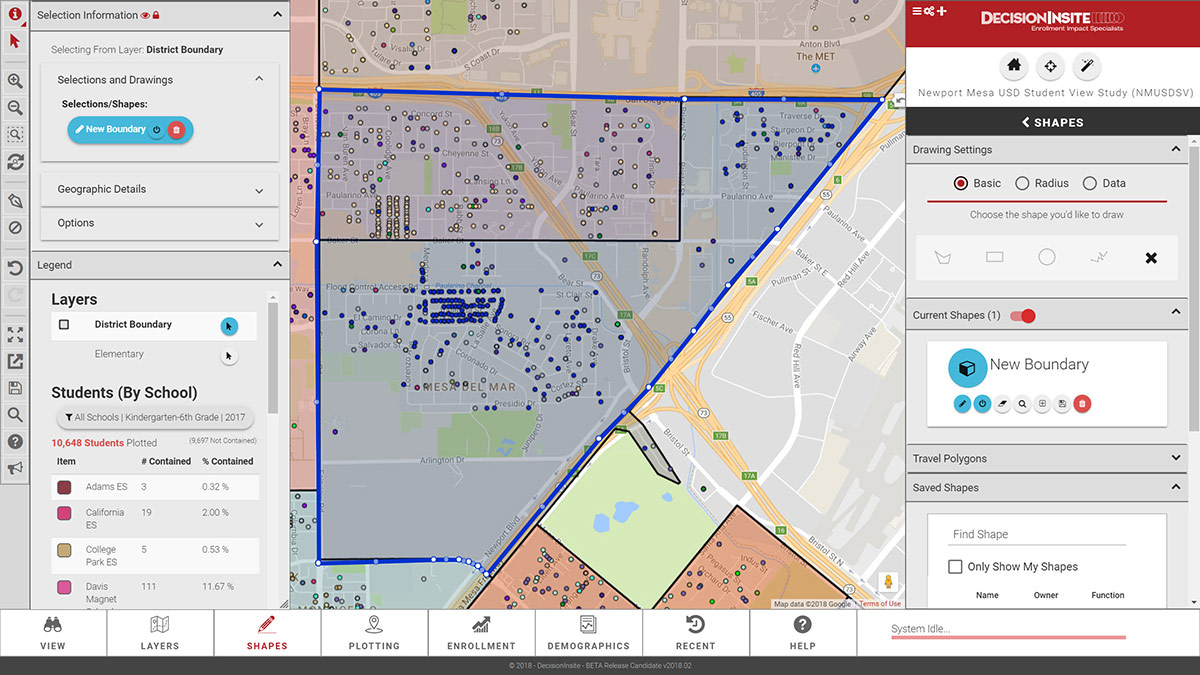
The tales of contentious and ultimately unsuccessful attendance boundary change processes are enough to strike fear in the hearts of school district leaders everywhere. Yet, there are times when an attendance boundary change is the right thing to do.
Here are some tips based on our experience with a wide range of districts who have engaged us to assist with attendance boundary changes.
Define the Goals and the Design Criteria:
Reaching agreement on the goals and design criteria at the outset of the process can expedite the process and reduce unnecessary conflict. Often there is an overriding reason behind the need to adjust attendance boundaries, for example, a school closure, a new school, changing grade configurations, or the need to reduce student transportation costs. Once the goals are clear, being explicit about the design criteria for the adjusted boundaries comes next. Such factors might include: Minimizing the number of students affected by the change; aligning feeder school boundaries where possible; balancing racial/ethnic populations; making more efficient use of school capacities; maximizing neighborhood school attendance areas; using significant geographic features as boundary lines e.g., highways, rivers, etc.
CSBA advocacy helps defeat school start time bill
But it’s one of several bills poised to re-emerge in 2019
he 2018 legislative year, like all others, carried with it several critical bills with significant implications for K-12 education in California — all of which you can read more about in CSBA’s “What’s New for 2019” report at www.csba.org/whatsnewfor2019 and on CSBA’s blog (blog.csba.org).
As the session was drawing to a close in mid-August, this year’s waters felt relatively calm as compared to previous years, with no real signs of cataclysmic waves on the horizon.
Well, that didn’t last long.
The final days of the session were marked by the re-emergence of Senate Bill 328 (Portantino, D-La Cañada Flintridge), the school start time bill, which had been dormant on the Assembly Floor since failing passage in September 2017, when it came up 15 votes shy of the 41 needed for passage.
A total of 1,217 bills made it to California Gov. Jerry Brown’s desk in 2018, which is 240 more bills than he acted upon in 2017. While it is relatively typical for there to be a larger slate of bills passed by the Legislature in the second year of each two-year session (as bills introduced but not passed in the first year of the session can still be heard and passed in the second), a 20 percent hike in bills is still quite the uptick.
Since the Legislature is all about “more bills” this year, we decided to follow suit with this year’s legislative scorecard.

By Aaron Davis
How we scored your legislators in previous years:
CSBA previously would select a handful of around a dozen impactful bills (some supported by CSBA, some opposed) on which to score each member of the Senate and Assembly. The scorecard typically only included bills that were passed by both houses, thus ensuring that every Assemblymember and Senator had at least one opportunity to vote on each of the bills.
How we scored your legislators this year:
CSBA is scoring each legislator’s favorable vote percentage on a total of 82 bills. A favorable vote is defined as one which aligns with CSBA’s official position. Each of these bills are those which CSBA sponsored, co-sponsored, actively supported or actively opposed in 2018.
Seven of these 82 bills — such as Senate Bill 328, the school start time bill — were introduced in 2017 but did not pass before the end of the 2017 legislative year. These bills were brought back and voted on in the Legislature in 2018.
Important notes about the scorecard:
- The favorable vote percentage is relative to how many total opportunities each legislator had to vote on these 82 bills.
- Education and Appropriations Committee members had more opportunities to cast votes on these 82 bills than other legislators — members of those committees are noted in the scorecard.
- On average, members of the Assembly cast 111 total votes on these bills, with members of the Senate casting an average of 84 votes; this is due primarily to the relatively higher volume of bills introduced in the Assembly versus the Senate.
- 49 of 82 bills were passed by the Legislature and sent to Gov. Brown, which means they were heard on both the Senate and Assembly Floors, thus giving each legislator at least one opportunity to vote on the bills.
- 33 of 82 bills did not pass the Legislature, which means some were heard on only one of the two floors, and some only in one or two committee hearings.
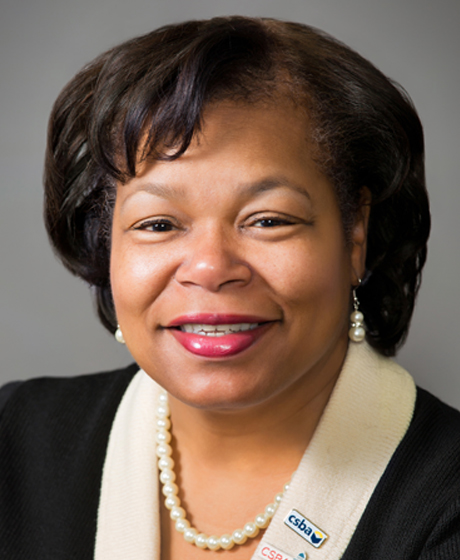
A conversation with …
CSBA President-elect Emma Turner
mma Turner is a trustee of the La Mesa-Spring Valley School District in east San Diego, a TK-8 district with about 12,300 students. Turner is particularly proud of the work the district does in its Literacy Academy, Arts Academy and STEAM Academy. She has been involved in CSBA since her second year as a board member in 2007.
Tell us a little about your background including your own K-12 education and professional experience.
I’m a lifelong learner, and that is unusual because I didn’t have a smooth start in education. I began K-12 in a deficit; I didn’t have the support at home to help me with my education and I didn’t have the support at school either. I soon learned that I would have to assimilate to fit in, or not get what I needed out of the system. I finished high school and one year of college and decided to join the Navy, where I could also finish my education. I was learning skills in the Navy while I was also getting my degree.
(Required by 39 U.S.C. 3685)
West Sacramento, CA 95691
West Sacramento, CA 95691
3251 Beacon Boulevard
West Sacramento, CA 95691
Total no. copies (net press run)
7,750
7,500
Paid/requested outside-county mail subscriptions stated on Form 3541
7,197
7,333
Paid in-county subscriptions stated on Form 3541
48
50
Sales through dealers and carriers, street vendors, counter sales, and other non-USPS paid distribution
0
0
Other classes mailed through the USPS
0
0
Total paid and/or requested circulation
7,245
7,383
Total paid and/or requested circulation
0
0
In-county as stated on Form 3541
0
0
Other Classes Mailed through the USPS
0
0
Free distribution outside the mail
0
0
Total free distribution
0
0
Total paid and/or requested circulation
7,245
7,383
Copies not distributed
505
117
TOTAL
7,245
7,383
Percent paid and/or requested circulation
100%
100%
Kimberly Sellery, Managing Editor


